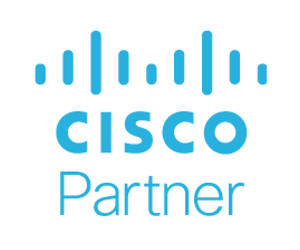Software-defined systems will drive a $14.7 billion market in the next three years as companies look to virtualize key processes and automate critical procedures. With the success of networking deployments such as software-defined WANs, new options — from database and security control to storage and access — have emerged to help enterprises reduce the risk of IT silos and streamline operations.
Collectively, these solutions are known as software-defined everything (SDx) and promise the potential of programmatic service delivery disruption by decoupling form from function. But what does this look like in practice? How do companies effectively assess where SDx makes sense for their IT stack?
LEARN MORE: Read more about how software-defined everything can help your organization.
What Is Software-Defined Everything?
As noted by Deloitte, while cloud computing now tops the digital transformation list for many companies, SDx is “breaking virtualization’s final frontier” by offering definitive disruption that can deliver measurable benefits on demand. The challenge? The term itself — software-defined everything — is frustratingly general, offering little insight into what it means or how it benefits the bottom line.
At its most basic, SDx is the software abstraction of any IT function — storage, networking or access — which in turn creates consistent, virtualized infrastructure that can be applied at scale. Consider the most popular software-defined solution, SD-WAN. Instead of relying on proprietary hardware to supply key network functions, processes are programmatically controlled and automated in a virtualized environment that leverages commercial off-the-shelf equipment.
The result? Specific hardware is no longer required to deliver key network functions. Instead, all business users regardless of department or location can access the same network infrastructure, allowing companies to enhance traffic management, improve performance optimization and increase application visibility
SDx applies this concept to other applications in the IT stack to create virtualized, software-driven solutions that decouple services from physical stacks, allowing companies to create best-fit, interoperable environments.
Three Reasons for Businesses to Use SDx
Proprietary hardware naturally creates systemic solution silos — what works on one server or for one department isn’t always interoperable with others. As a result, IT teams often find themselves duplicating time and effort to manage similar stacks at scale.
SDx solves silo issues by offering three key advantages:
- Agnostic implementation: Traditional IT deployments rely on consistency at the hardware level to create corporate networks. But this creates a problem as environments expand: Absent the right hardware, interactivity is impossible. By virtualizing operational layers, SDx allows agnostic implementation; common hardware capabilities are used to deliver a consistent experience.
- Automated operation: By virtualizing key processes, companies gain the advantage of standardization, which in turn empowers automation. This allows enterprises to streamline critical operations such as resource assignment or network traffic management, both reducing the potential for human error and allowing IT teams to focus their efforts elsewhere.
- Adaptable application: By decoupling resource management from underlying hardware, IT teams can customize SDx applications across both physical and virtual distance, allowing departments to retain unique functionality without increasing overall complexity.
What Are Common SDx Use Cases?
While SD-WAN solutions offer the most straightforward value-add for SDx, emerging technologies now offer evolving use cases for software-driven systems, such as:
- Software-defined networking (SDN): The more general case of SD-WAN, advanced SDN solutions allow organizations to build programmable networks that eliminate manual configuration roadblocks and help bridge the gap between on-premises deployments and emerging multicloud mandates.
- Software-defined storage (SDS): As data volumes rapidly increase, legacy data centers simply can’t keep up. SDS solutions eliminate the constraints of proprietary hardware and allowing companies to scale storage capacity on demand.
- Software-defined access (SD-access): Corporate offices are no longer the primary access point for employees. Instead, staff are using mobile devices to request data access from within the cloud or on the edge of IT stacks. SD-access solutions offer end-to-end traffic segmentation to both streamline authorization and increase total security.
- Software-defined branch (SD-branch): As consumers prioritize digitally driven engagement, organizations need ways to deliver branch-level benefits at scale and on demand. SD-branch solutions make it possible to consolidate hardware network functions into a single, streamlined software platform.
SDx represents a fundamental change that captures the true value of virtualization by delivering agile, adaptable and hardware-agnostic solutions at scale. By decoupling form from function and empowering programmatic process management, the right SDx provider can help companies go all-in on software-defined everything.













